DIBELS is right around the corner, and let’s face it, teaching to the test happens from time to time in our kindergarten classrooms. That four letter word, data, is always lurking in the back of our minds! These are just some of the ways I prepare my students for the upcoming DIBLES assessments.
If you do NOT administer the DIBELS test in your school, that’s okay, keep reading! These tips will definitely help your student’s no matter what. In the end, this is all a way to improve their phonics skills.
Aside from the weekly or bi-weekly progress monitoring, I like to do quick and easy refreshers with the students. These are my top 5 favorites:
1. CVC practice all day, every day until the assessment. I scrap all the CVCe work and digraphs. We solely focus on reading CVC words. This can be done different ways:
a.) They can work independently in centers doing any type of CVC work you have. I like the CVC puzzles from Lakeshore or I have some puzzles that are line art that I cut and laminate and they put them in a pocket chart. They are freebies, so click on the picture if you want them! I have the students write the word and put it in a sentence.
Puzzles from Lakeshore
Click here for the CVC Puzzles Freebie!
b.) Practicing CVC words in a small reading group is also important. I have CVC slider cards that I use. For those kids who are ready to read the whole word I open the slider to reveal the entire word. They are to read it fast. For those kids who still need to decode the word, we slowly reveal each letter and then they read the whole word. I like these CVC sliders because they also have pictures after the word which is very helpful for my ELL students. If you don’t have these, simple flashcards would do, or even writing a list of CVC words on a white board and do it together. Or you can write 3-4 different CVC words on a strip of paper for each student. I make sure to make each strip different. As they sit at my horseshoe table, they are all reading the strips at the same time to themselves. This way they are all engaged, and you can give automatic feedback to the individual student. I really try and make it fun and build up their confidence when they can read the whole word and don’t need to say all the sounds. For example: “Oh my gosh, Ashley read the whole word so quickly! She didn’t need to say all the sounds. Super!” This will really get them ready for the whole words read (WWR) portion of the nonsense word fluency (NWF) assessment. I know once they get to 1st grade they must read the whole word!
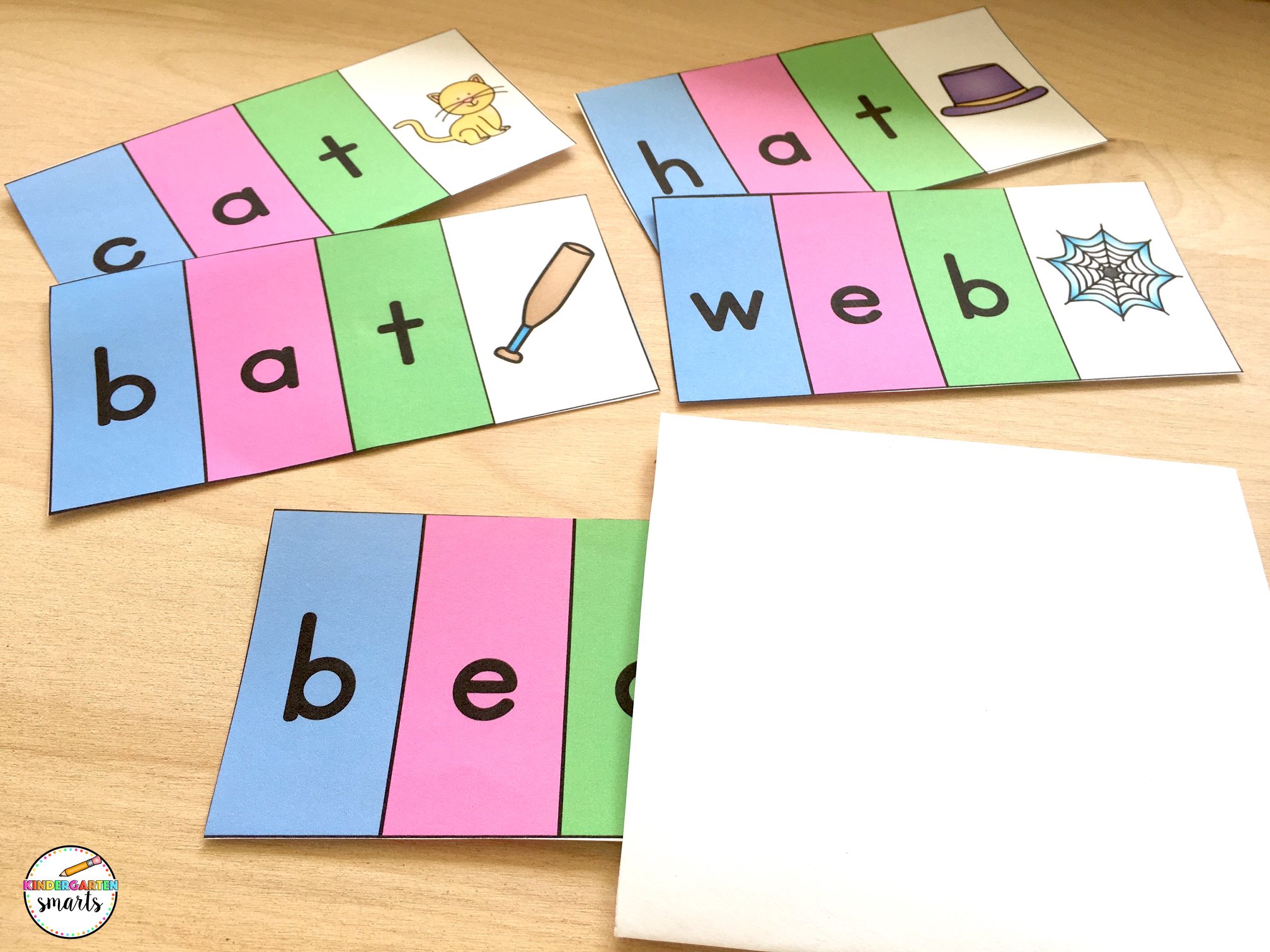
Click here to grab the CVC Sliders
c.) Another quick way to incorporate CVC practice in your daily routine, is to do this whole group. This is super quick! I have an easel in my room and I write on the white board about 12 different CVC words. Make sure to mix up the vowels. You can do this TWO ways. First I point to the middle sound (using a pointer). I ask the class, “sound?” They reply “/o/” and then I swoop my pointer across the whole word and say “word?” and they reply “pot”. This gets them to focus on the vowel sound first and then read the whole word. After that quick warm up, I go back and then point to the words as we practice our whole words read (WWR). This is done with a choral response with everyone participating. Or there are times I have the boys do some and the girls some.
2. Another way to prepare them for DIBELS is to do letter naming fluency (LNF), nonsense word fluency (NWF) and first sound fluency (FSF) in small groups with timers. Since all the tests are done in 1 minute, I like to prepare them for that part so they know to go fast and skip over letters or sounds they don’t know. I usually do this during my small group during reading centers. Since I have a large class size this year, my groups are between 7-8 kids at my horseshoe table.
For letter naming practice, I make copies of the same practice sheet and put them in a sheet protector. So when they first sit down at my table, we begin with this warm up. I like to use my letter naming papers from my Kindergarten DIBELS practice in my TPT store. I make sure each kid has their finger on the first letter and then I set my minute timer and I say “go”. I lean in and listen to the students and provide any feedback if needed. Once the timer goes off, they circle the letter they ended on with a dry erase marker. Then we go back and do it again and try to beat our time. This took a little practice to get to this point, so I made sure to model a good example and a bad example. I point out that if I don’t know a letter, I don’t sit there and stare at it because that’s wasting my time, and I’m not going fast. So I teach them to “skip it” if they come across a letter they don’t know. They love to watch my good examples and bad examples and yell out “skip it!!” when I show how I’m stuck on a certain letter.
So, everything I just did for LNF I also do this in small group with NWF too. I may choose to do one or the other as our warm up in small group. I don’t usually do both, but that’s up to you. Mainly because we have so much to cover in our 15-20 min sessions that I try not to take up too much time. As far as the papers to give to your group for the NWF, I also like to use my printouts from my Kindergarten DIBELS practice or, I make photo copies from the progress monitoring booklet. I have heard that reading nonsense words isn’t the best for students, and they should always be practicing with real CVC words. My reply to that is simple. It’s exposure to different types of reading. They know the difference between a silly word and a real word because I model it for them. I explain when we do this type of practice with NWF it’s what we will see on our test, and we know these words don’t make sense.
As far as FSF practice, I obviously focus on this more in the beginning and middle of the year and not towards the end of the year. I have FSF flash cards with pictures that I use. For example: I say “dog” and I flash the picture up. They respond /d/. As an extension, I write the letter on the back of the card to practice letter identification. As far as using the 1 minute timers, I quickly do this with the flash cards as they respond with the beginning sound. Simple!
Click here! for my FSF freebie flashcards!
3. Practice Phoneme Segmentation ALL DAY! Phoneme segmentation fluency (PSF) is probably one of the easier assessments to practice because it’s all done orally. When we get close to assessment time, I scrap all other phonemic awareness and focus only on phoneme seg. During whole group, I have them chorally respond to many different words. I like to throw in simple and tricky words to keep them on their toes! Or I have them partner share and they have to tell their partner the sounds. I also do this during small group too. This way I can really zone in on the kids who still need help in a smaller setting. During whole group it’s easy to lose focus on those who still haven’t mastered it yet. Another time I like to practice PSF is when we are waiting in line. Such as, we get to our specials early and these little bodies have trouble staying quiet, so I bust out some phoneme seg to engage them! Or as we line up to go outside I have each row phoneme seg a word as they get in line. It’s learning and classroom management all balled into one 🙂
Here is a fun way to do it visually as well!

Or you can always print these fun phoneme segmentation puzzles so they can see the actual sounds cut into strips and it also makes a fun picture too!
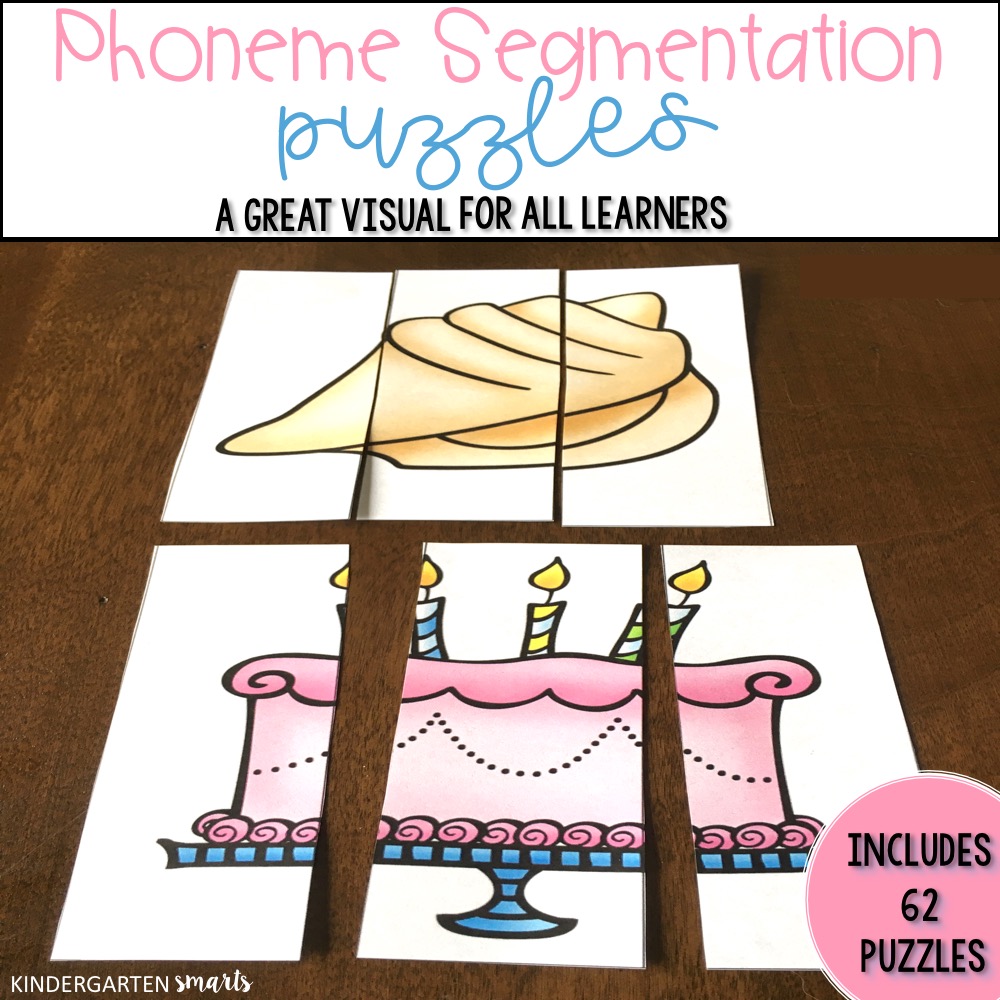
Click here to grab my Phoneme Segmentation Clip art Puzzles!
4. Nonsense word fluency (NWF) is probably the hardest assessment, and it’s one of the more important ones as the student’s will continue this assessment into 1st grade. I like to practice this quickly during whole group. I write on my easel about 12 different nonsense words. I model the different ways to do this. One way is to just say all of the sounds and don’t do any of the decoding. Another way is to say the sounds and then decode the word. The last way is to just read the whole word without saying any of the sounds. I let the class know, “you will be timed, and we need to do this fast so we have to pick one of the ways that works best for you. Some of you will not be ready to read the whole word yet, and that’s ok!” Using a lot of metacognition is key. So I give them good examples and bad examples of how I would read the nonsense words. I teach them to “skip it” if they don’t know a letter or a sound. I don’t always have to go over all the rules, but it doesn’t hurt to do a quick review once and awhile! So I use my pointer and we go through each word. I start with the first way to read the nonsense word (just saying the sounds). Then we start over and do the second way to read the nonsense word (decoding and recoding), and then last we go back and read the whole word. Choral reading isn’t always the best way to check for understanding, but I use this as a practice rather than an assessment. When we break into small groups or I do progress monitoring, that’s when I can zone in on the individual student.
5. Real word vs. silly word practice is fun and engaging for the students. I like to print out my flashcards from my Kindergarten DIBELS practice and use these. I hold up a card and they read the word and decide if it’s a real word or a silly word. I use my pocket chart to place them in the correct category. This can be done whole group, small group or as a literacy center. That’s the beauty of this practice! It’s so versatile! If they are doing it as a literacy center, I have a print out where they write the words in the correct column (real vs silly) and then they are to write the real words in a sentence.
I hope these teaching strategies will be as helpful to you as they are for me! In the beginning of the year, I have a ton of students on red. And by a ton, I mean like 80% of my class are intensive. This is my 5th year teaching kinder, and I’ve always had 99-100% at benchmark by the end of the year.
If you would like to see more of my Kindergarten DIBELS Practice with Printable Worksheets, click on the pictures below or the link here.
Kindergarten Smarts is a participant in the Amazon Services LLC Associates Program, an affiliate advertising program designed to provide a means for sites to earn advertising fees by advertising and linking to Amazon.com. If you would like to learn more, please visit my disclosure policy page.
Join the newsletter
Sign up for exclusive freebies and teaching tips here!
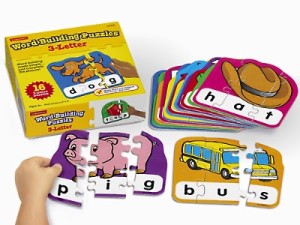
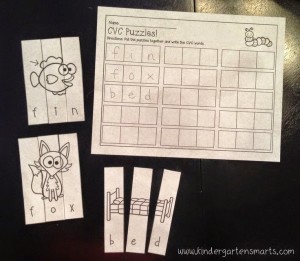
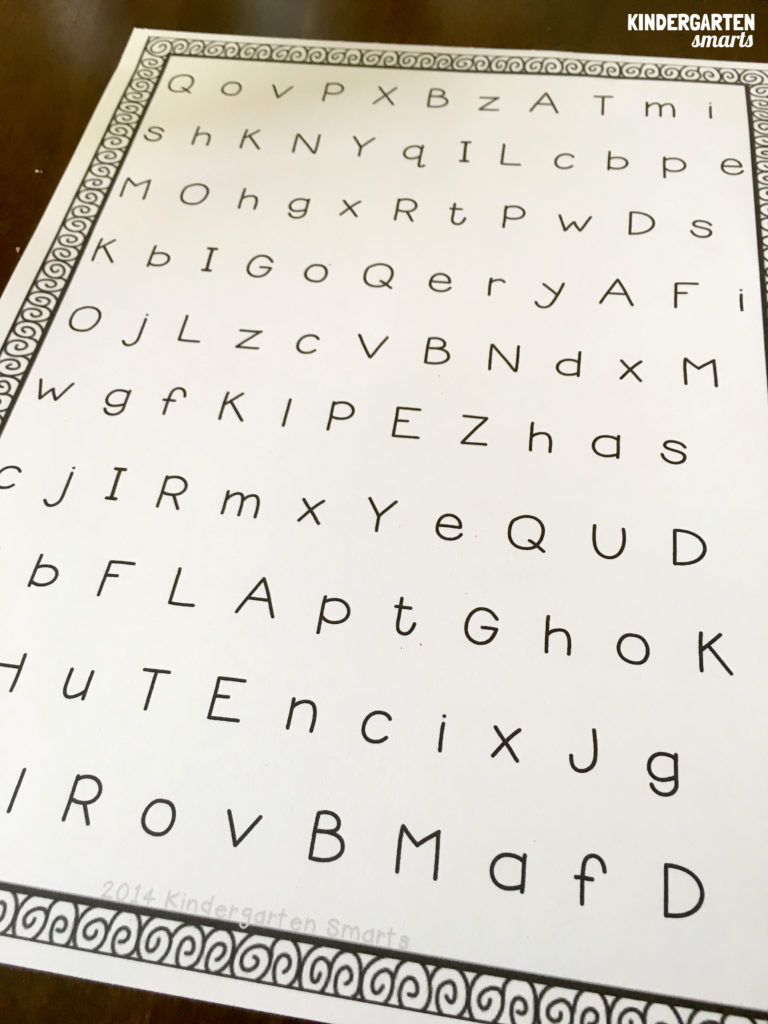

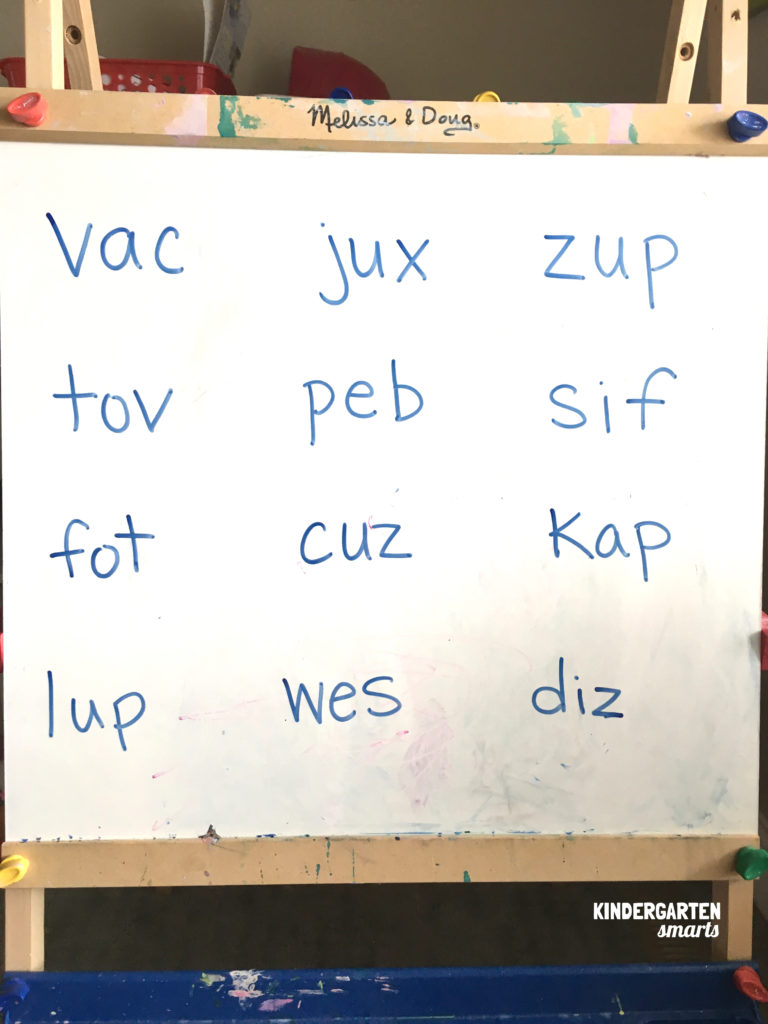




Hey! My name is Emily Cone. I have just learned that I am moving to K-5 after 14 years in 2nd grade. While I am nervous and overwhelmed, I am beginning to get excited about this new adventure. Please share any tips/suggestions/advice. I am eager to learn all I can before school starts in August. Thanks!